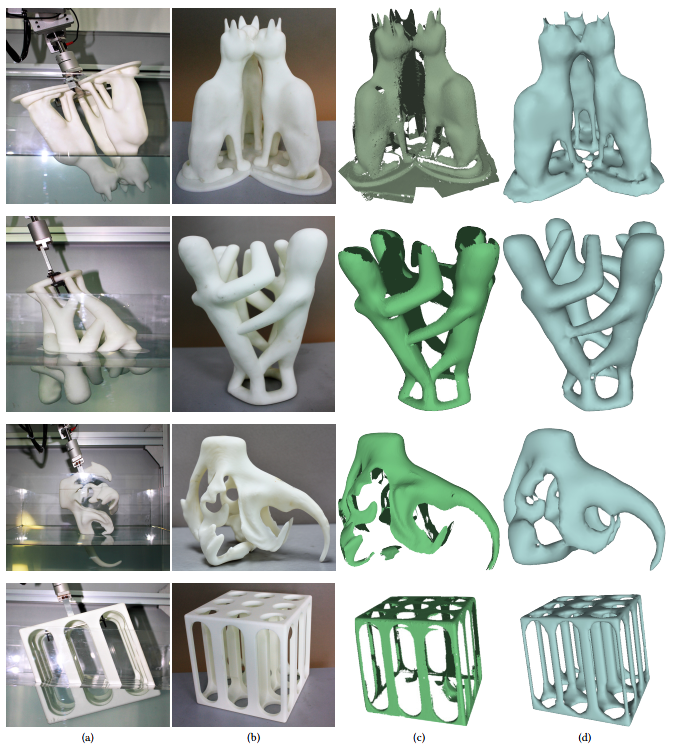It sounds like a baptism but it’s not! Researchers from Tel-Aviv University, Shandong University, University of British Columbia and Ben-Gurion University implemented a method based on Archimedes’ ancient principle of displacement.
They measured changes in water volume in order to reconstruct the shape of 3D objects. Unlike the laser 3D scanning, this method enabled them to find out hidden areas of the object, and to deal with materials that are not always easy to scan.

DIP scanning
Researchers made use of a robotic arm to submerge complex 3D shapes into water.
Thereafter, the more the object was dipped, the more the research team was able to measure the volume of water and to thoroughly reconstruct the shape of the object. The action can be repeated several times in order to get the expected 3D reconstruction.

Compared to other scanning methods (especially optical ones), this one enables to bring out all areas of the object. In addition, DIP can normally accept all kinds of materials. However, even though it is a low-cost technique, it requires much more time to 3D scan an object due to the repetitive action of the water dipping process.
Last but not least, the research team will unveil this work their work at the annual computer graphics conference – SIGGRAPH 2017.
For further information about 3D Printing, follow us on our social networks and subscribe to our newsletter!





